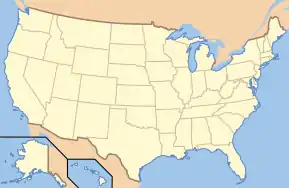Thomas Edison National Historical Park
Thomas Edison National Historical Park preserves Thomas Edison's laboratory and residence, Glenmont, in West Orange, New Jersey, United States. These were designed, in 1887, by architect Henry Hudson Holly.[3] The Edison laboratories operated for more than 40 years. Out of the West Orange laboratories came the motion picture camera, improved phonographs, sound recordings, silent and sound movies and the nickel-iron alkaline electric storage battery.
Thomas Edison National Historical Park | |
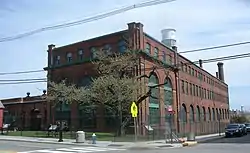 Thomas Edison's Laboratory | |
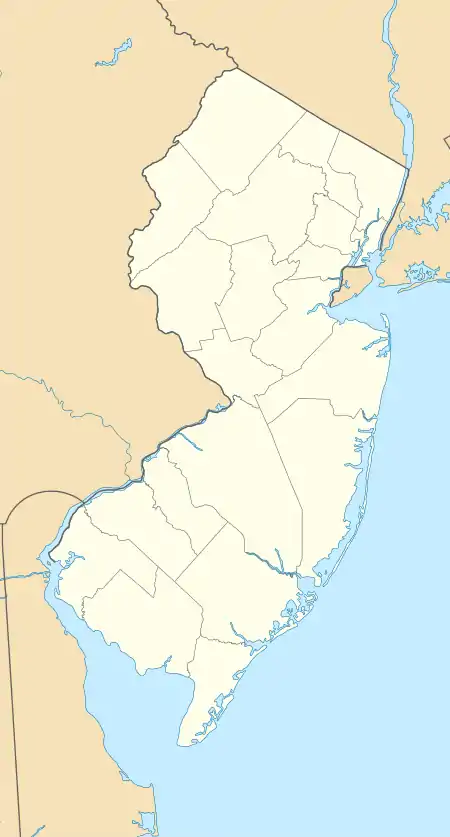 | |
| Location | 37 Honeysuckle Ave, West Orange, NJ 07052 |
|---|---|
| Coordinates | 40°47′09.46″N 74°14′24.42″W |
| Area | 21.25 acres (8.60 ha)[1] |
| Built | 1887 |
| Architect | H. Hudson Holly |
| Architectural style | Late Victorian, Queen Anne |
| Visitation | 55,284 (2011) |
| Website | Thomas Edison National Historical Park |
| NRHP reference No. | 66000052[2] |
| Significant dates | |
| Added to NRHP | October 15, 1966 |
| Designated NHS | September 5, 1962 |
| Designated NHP | March 30, 2009 |
Properties
The park comprises two properties in West Orange: the second Edison Laboratories complex, and Edison's home in Llewellyn Park about .5 miles (0.80 km) to the west.
The laboratory complex comprises the industrial facility built by Edison in 1887 to research and develop his inventions. The complex includes more than a dozen buildings that supported Edison's research into electricity, photography, motion pictures, chemistry, metallurgy, chemistry and other disciplines. A private library was attached to the main laboratory building. Specialty heavy and precision machine shops made tooling and prototypes.[4]
Edison's Queen Anne style home was designed by Henry Hudson Holly and built between 1880 and 1882 for Henry Pedder. It originally comprised 23 rooms. The mansion was built with gravity-convection central heat, indoor flush toilets, and hot and cold piped water. Pedder was found to have embezzled funds from his employer to build Glenmont, and was forced to surrender the estate, which Edison bought in 1886 for $125,000, moving in with his newly-married second wife Mina and his three children from his first marriage. The house retains its original furnishings in an Eastlake style interior. Edison added six more rooms, and electrical wiring.[5][6]
Edison's children with Mina grew up at Glenmont, including future New Jersey governor Charles Edison and industrialist Theodore Miller Edison[5]
History
The history of how the site became a National Historical Park is complicated. Edison's home was designated as the Edison Home National Historic Site on December 6, 1955. The laboratory was designated as Edison Laboratory National Monument on July 14, 1956. On September 5, 1962, the 21-acre (85,000 m2) site containing the home and the laboratory were designated the Edison National Historic Site and overseen by the National Park Service.[1] On March 30, 2009, it was renamed Thomas Edison National Historical Park, adding "Thomas" to the title in hopes to relieve confusion between the Edison sites in West Orange and Edison, New Jersey.[7] Following extensive renovations of the laboratory complex, there was a grand reopening on October 10, 2009.
In popular culture
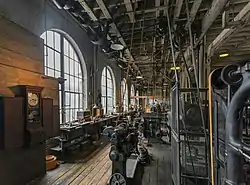
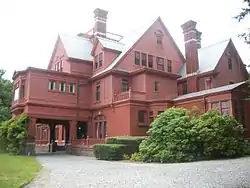
In 1996, the alternative rock band They Might Be Giants recorded four songs on phonograph cylinder at the museum. One of these recordings, of the song "I Can Hear You", appeared on their album Factory Showroom released later the same year. The other three songs ("Maybe I Know", "The Edison Museum", and a re-recording of the Factory Showroom track "James K. Polk") were released on the band's website in 2002.
See also
References
- "Edison Park Management". National Park Service. Retrieved 2009-08-16.
- "National Register Information System". National Register of Historic Places. National Park Service. March 13, 2009.
- "Edison and his Era". National Park Service. 26 February 2015. Retrieved 4 October 2018.
- "Edison's West Orange Laboratory". National Park Service. Retrieved 6 December 2019.
- "Thomas Edison's Historical Home". Edison Innovation Foundation. Edison Innovation Foundation. Retrieved 6 December 2019.
- "NPS.govPark HomeLearn About the ParkHistory & CultureCollectionsGlenmont Collections Glenmont Collections". Thomas Edison National Historical Park. National Park Service. Retrieved 6 December 2019.
- "ACT COMMEMORATING THE LITE, OR LIFETIME INNOVATIONS OF THOMAS EDISON". Congressional Record. February 28, 2006. Retrieved 2009-08-16.
External links
| Wikimedia Commons has media related to Thomas Edison National Historical Park. |
- Thomas Edison National Historical Park - official site
- Stained glass restoration National Park Service
- Historic American Buildings Survey (HABS) No. NJ-729, "Glenmont, Llewellyn Park, West Orange, Essex County, NJ", 31 photos, 13 measured drawings, 12 data pages
- HABS No. NJ-729-A, "Glenmont, Gardener's Cottage and Greenhouse"
- HABS No. NJ-729-B, "Glenmont, Barn"
- HABS No. NJ-729-C, "Glenmont, Concrete Garage"
- HABS No. NJ-729-D, "Glenmont, Pump House"
- Historic American Engineering Record (HAER) No. NJ-70, "Thomas A. Edison Laboratories"
- HAER No. NJ-70-A, "Thomas A. Edison Laboratories, Building No. 2"
- HAER No. NJ-70-B, "Thomas A. Edison Laboratories, Building No. 3"
- HAER No. NJ-70-C, "Thomas A. Edison Laboratories, Building No. 5"
- The Invention Factory: Thomas Edison's Laboratories, a National Park Service Teaching with Historic Places (TwHP) lesson plan
